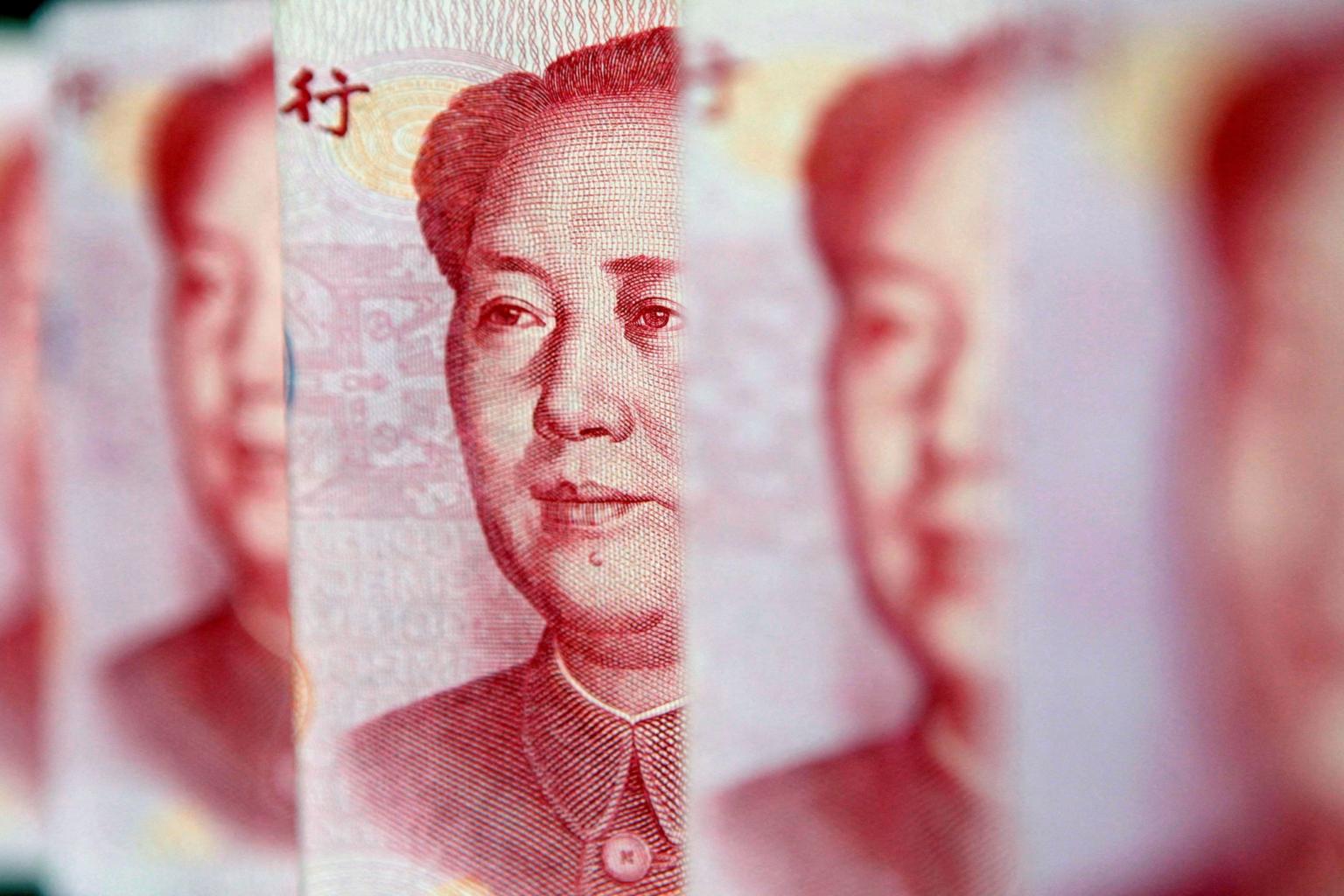China's renminbi at crossroads as Covid-19 resurgence threatens economic growth
Sign up now: Get ST's newsletters delivered to your inbox

The People's Bank of China's tolerance for yuan strength also is wearing thin.
PHOTO: REUTERS
Follow topic:
BEIJING (BLOOMBERG) - The renminbi is setting course to depreciate this year as risks to economic growth put an end to two straight years of gains.
The resurgence of Covid-19 lockdowns and surging commodity prices are spurring doubts over China's 5.5 per cent growth target this year. The prospect of further monetary easing at a time when global central banks hike rates is set to accelerate outflows and further undermine the renminbi.
The People's Bank of China's (PBOC) tolerance for renminbi strength also is wearing thin. It made the biggest push to weaken the currency through fixings last week.
While a weaker renminbi could help boost exports, a sharp decline could trigger panic about financial stability and take the shine off Chinese assets, although some strategists see that as a boon for the nation's bonds. A global exodus from Chinese markets last week prompted a swathe of promises of support from policymakers.
"The renminbi has passed an inflection point," said Mr Hao Hong, head of research and chief strategist at Bocom International Holdings. It will continue to weaken, but the pace will be controlled by the PBOC, he said, adding that a weaker renminbi will spread the recovery costs onto China's trading partners and neighbours.
The renminbi has fallen 0.9 per cent this month, set for its biggest decline since May last year. It still remains Asia's best-performing currency this year, with the smallest loss against a US dollar that is getting bolstered by bets that the US Federal Reserve could hike rates by half a percentage point at its next meeting, if needed.
In contrast, a median of forecasts from economists surveyed by Bloomberg shows the PBOC may cut banks’ reserve requirement ratio by 100 basis points to 10.5 per cent by the first quarter of next year.
UBS Group cut its growth forecast for China this year to 5 per cent from 5.4 per cent. Morgan Stanley now forecasts a 5.1 per cent gain, down from 5.3 per cent as Covid-19 curbs weigh on the economy.
"This round of Covid-19 resurgence is likely to not only hurt services, but also industrial production and trade growth," said Ms Chen Jingyang, Asian FX strategist at Hong Kong & Shanghai Banking Corp. The renminbi is likely to be on the back foot over the near term and may fall to 6.45 per dollar by year-end, she said.
The dollar-onshore renminbi option implied volatility indicates a 70 per cent probability it will fall to 6.5 per dollar by the end of the year. It dropped 0.1 per cent to 6.37 per dollar on Tuesday, while the offshore renminbi was little changed at 6.38 per dollar on Wednesday.
The renminbi jumped the most since December on March 16 on the back of a historic surge in Chinese shares as the top financial policy committee led by Vice-Premier Liu He pledged to stabilise battered financial markets and stimulate the economy.
A report that Saudi Arabia is seeking to price some of its oil exports in renminbi also helped the advance.
However, the currency pared those gains as the average of the gap between the PBOC's daily renminbi reference rate and market estimates widened to 68 basis points last week, the highest on record since Bloomberg started the survey with analysts and traders in 2018.
The PBOC's weaker fixings could also be aimed at correcting the divergence in the onshore and offshore renminbi, which widened last week to the most since June, a former State Administration of Foreign Exchange official said.
Mr Guan Tao, who is now a member of China FX Committee, said in an interview that the onshore unit is being supported by dollar selling by exporters, whereas the offshore rate is weighed by stock outflows,
Mr Ju Wang, head of Greater China FX and rates strategy at BNP Paribas, said: "China's export growth is likely to slow more notably in the second half, and a step-by-step partial border reopening - likely to begin later this year - could lead to an increase in the service trade deficit."
Mr Wang sees the renminbi falling to 6.60 per dollar by year-end.

